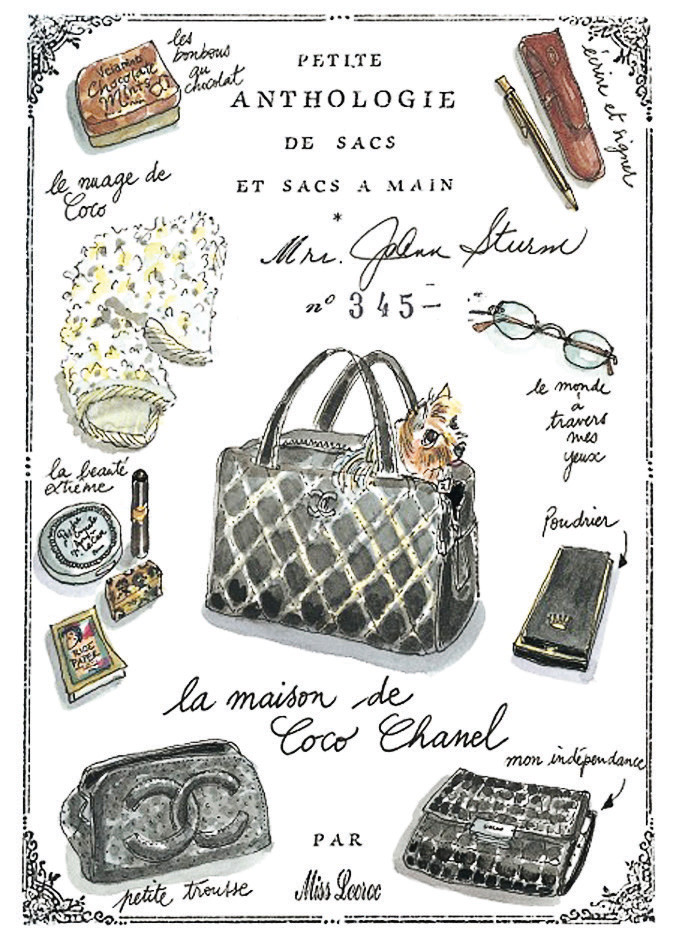-
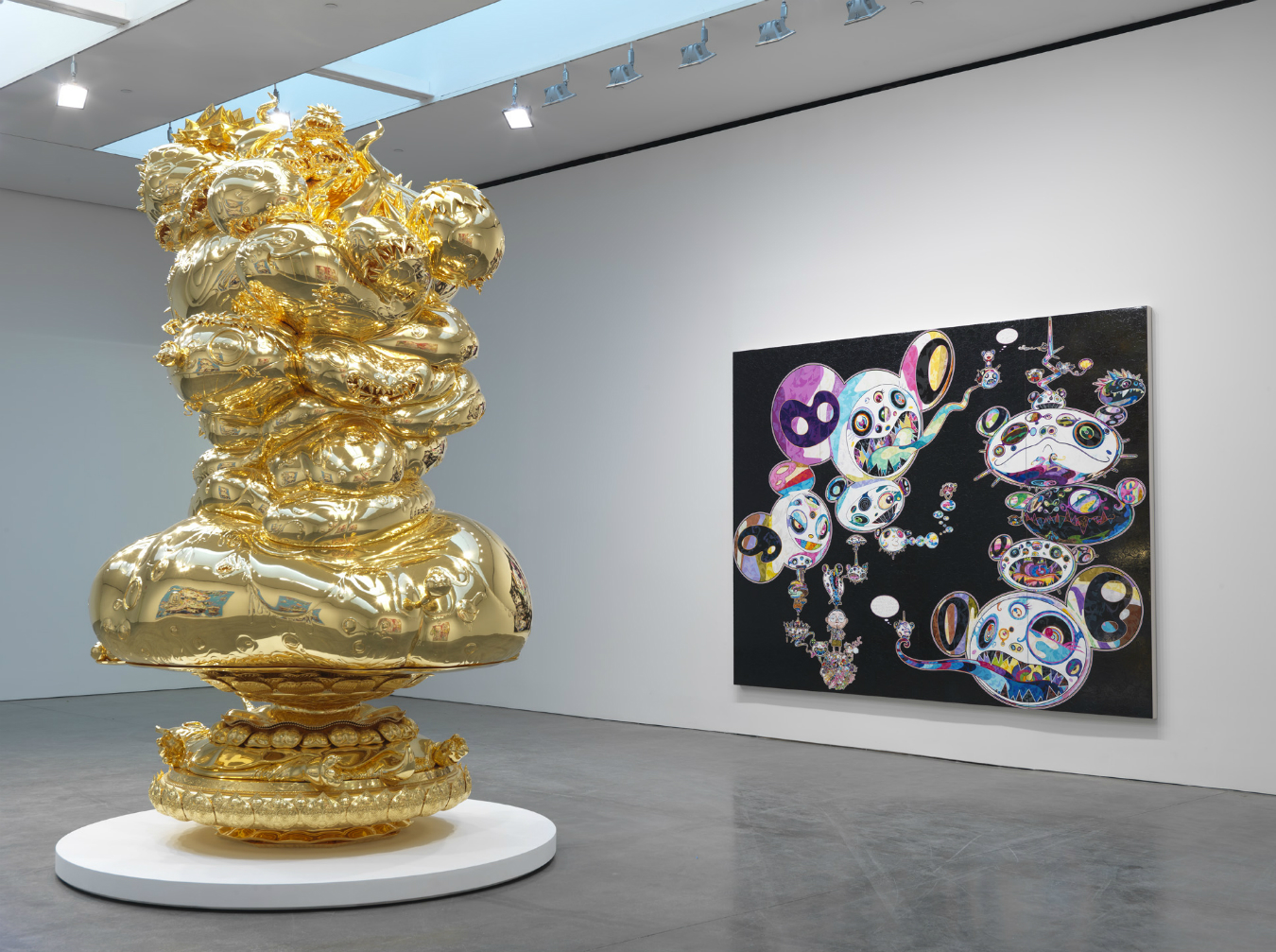
In the Land of the Dead, Stepping on the Tail of a Rainbow at New York’s Gagosian Gallery.
-
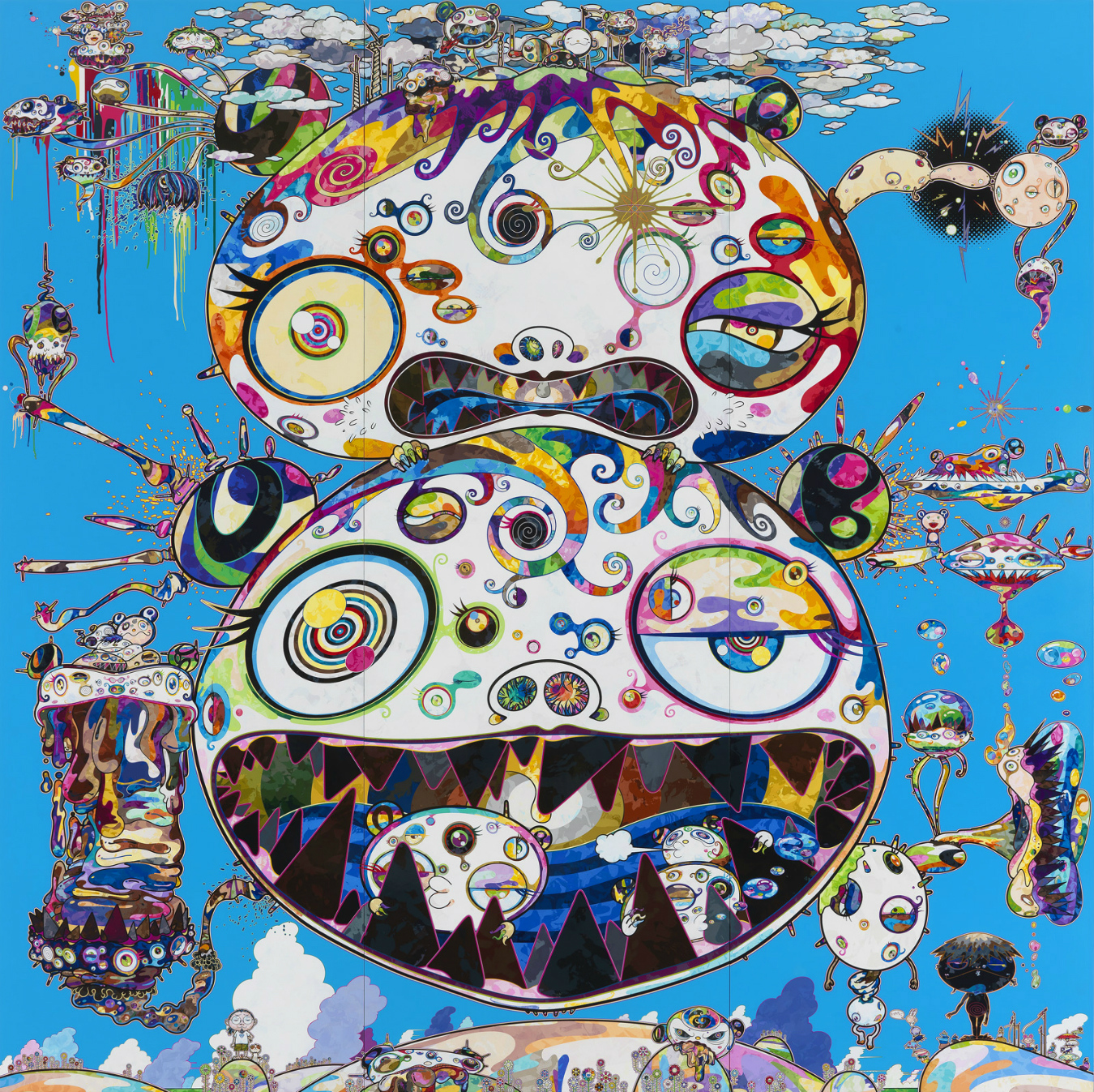
Tan Tan Bo – In Communication by Takashi Murakami, 2014. Acrylic on canvas. Gagosian Gallery.
-
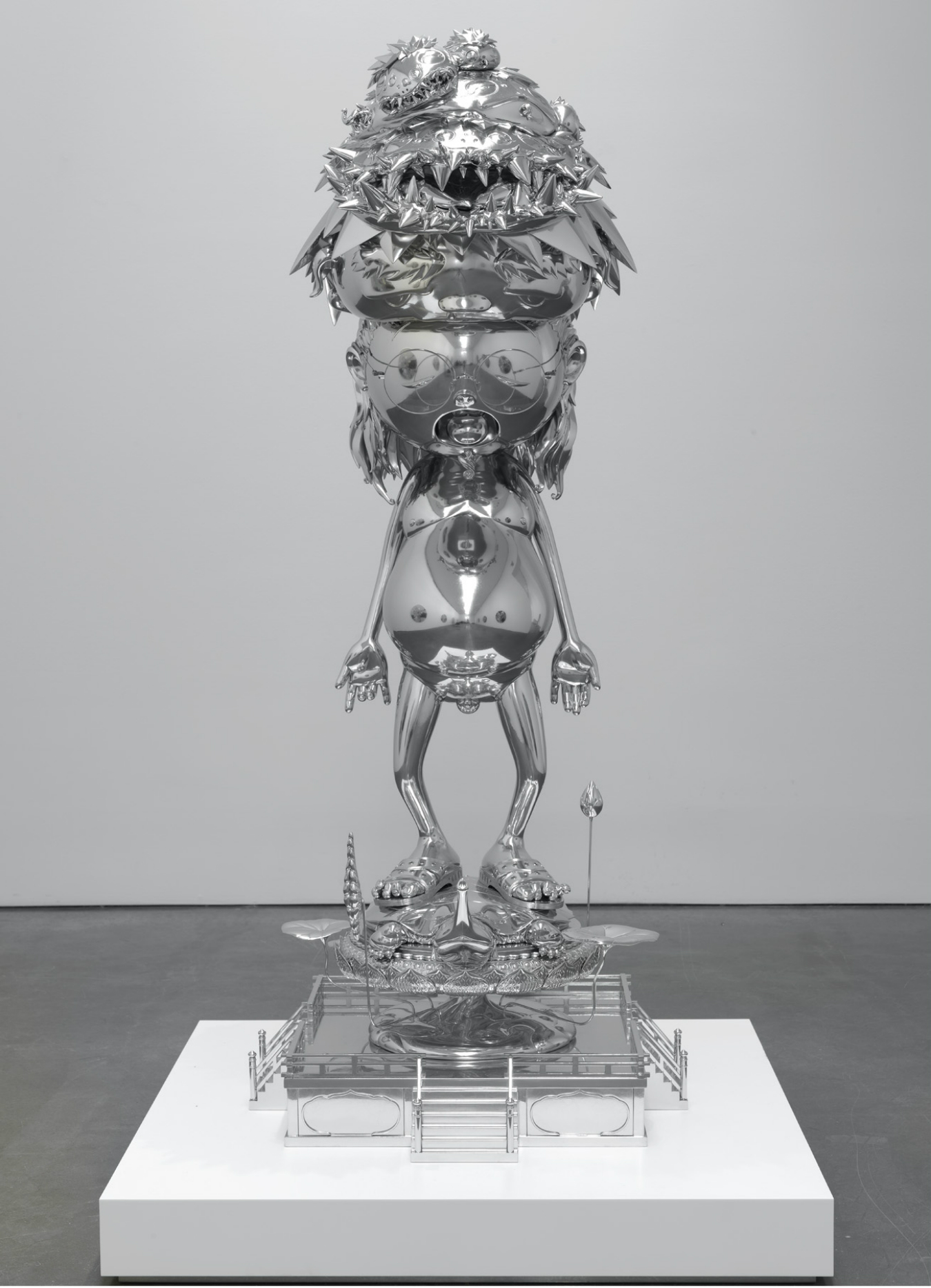
Invoking the Vitality of a Universe Beyond Imagination by Takashi Murakami, 2014. Platinum leaf on carbon. Gagosian Gallery.
-
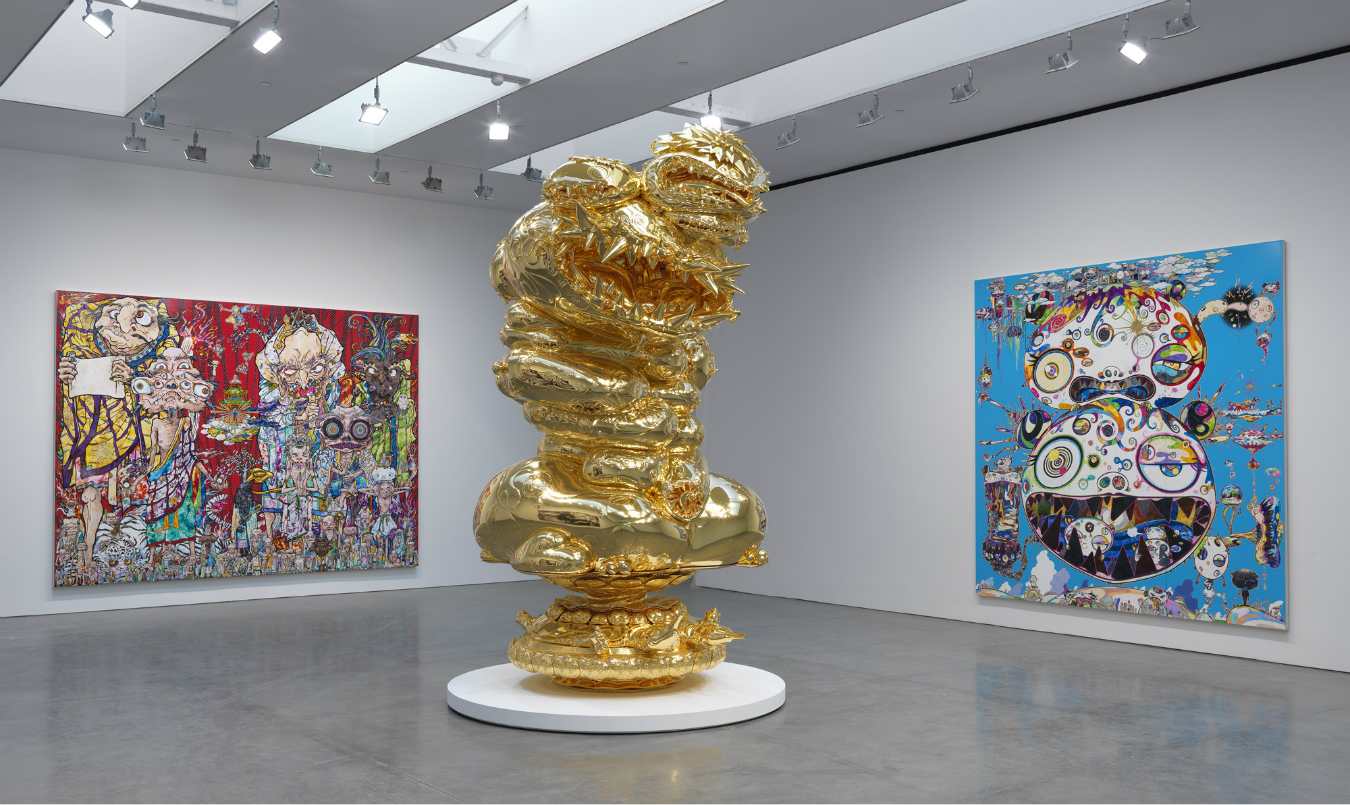
In the Land of the Dead, Stepping on the Tail of a Rainbow at New York’s Gagosian Gallery.
-
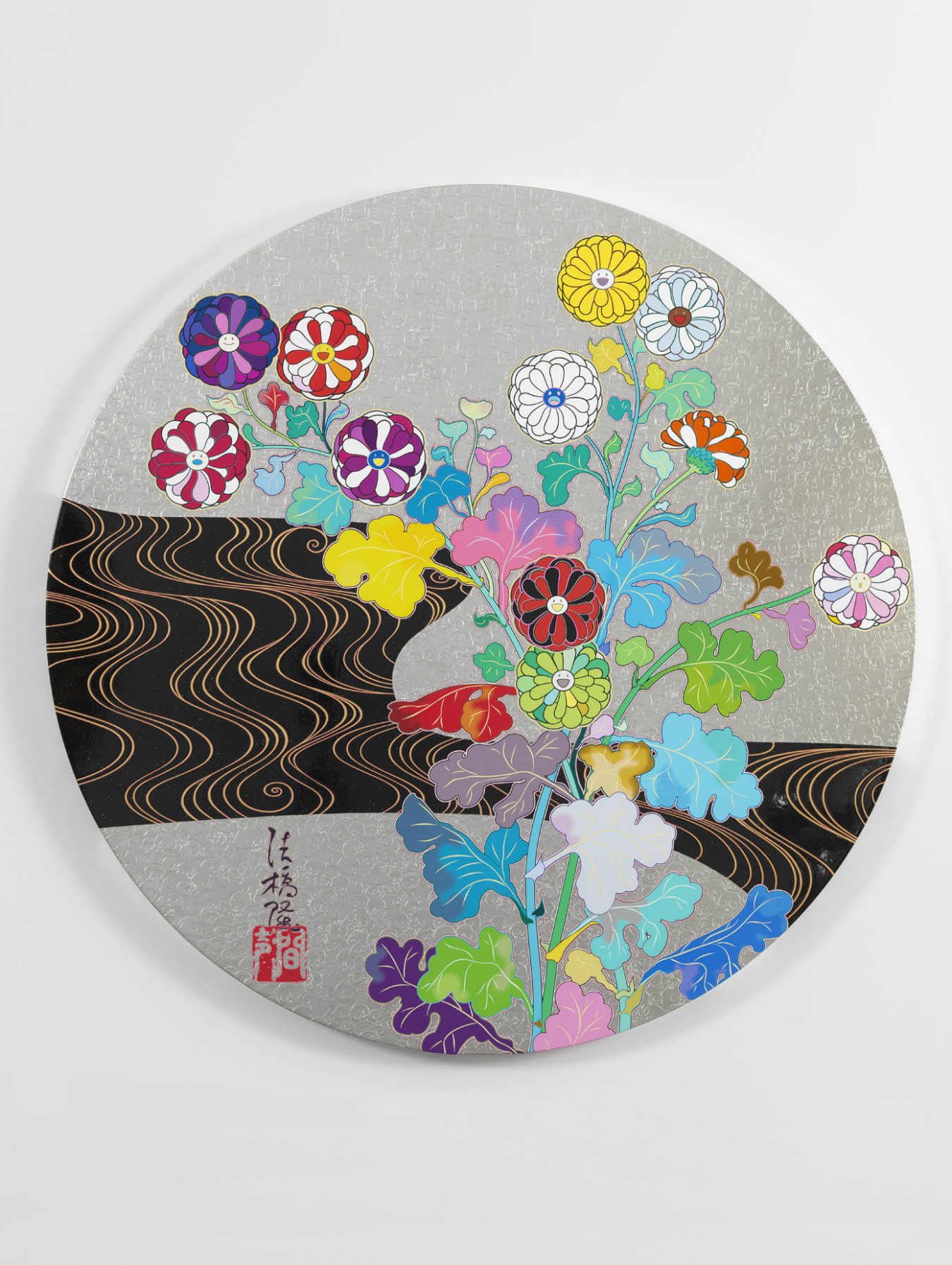
Hokkyō Takashi – Kansei by Takashi Murakami, 2014. Acrylic, platinum leaf, and gold leaf on canvas. Gagosian Gallery.
-
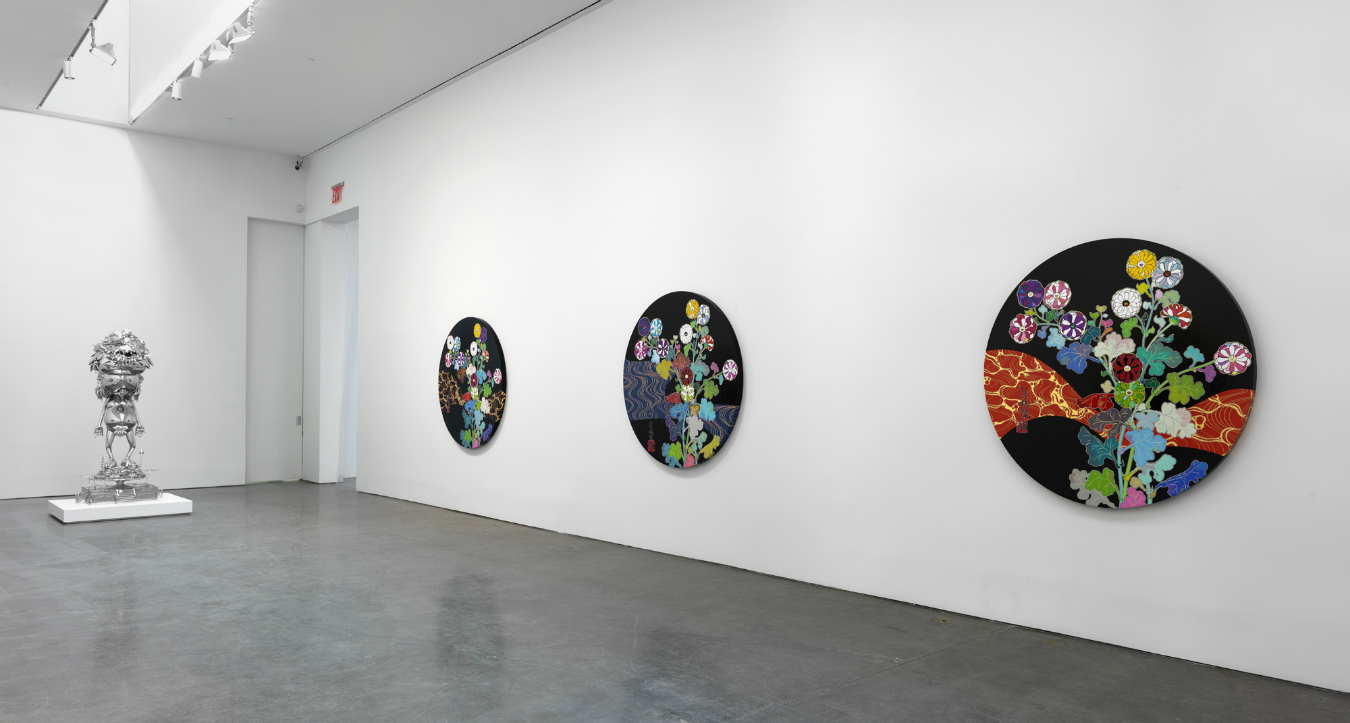
In the Land of the Dead, Stepping on the Tail of a Rainbow at New York’s Gagosian Gallery.
-
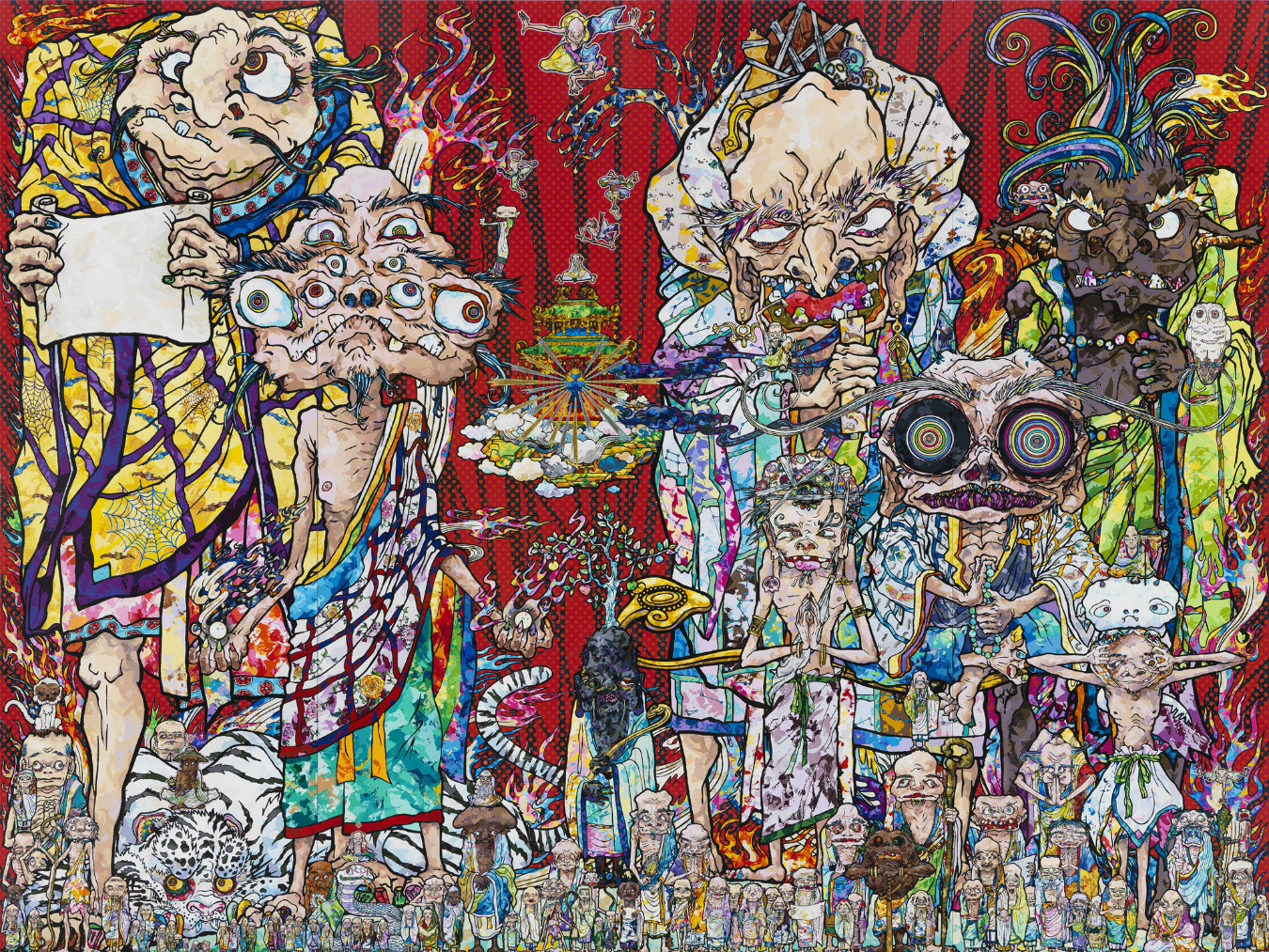
Isle of the Dead by Takashi Murakami, 2014. Acrylic on canvas. Gagosian Gallery.
Takashi Murakami at the Gagosian Gallery
Dying on a prayer.
“I have never once been able to escape the fear of death. Not so much death itself, but the physical pain and emotional desolation that accompany the process of dying. With no religion to comfort me, no breathing methods to steady my heart, will I be able to face my fate? I am not yet prepared.”
This text is scrawled in small writing at the top of Takashi Murakami’s painting Double Helix Within Dark Matter (2014). It conveys the musing of Murakami’s alter ego, a blue anthropomorphic creature named Mr. DOB—an homage to, and mockery of, iconic cartoon characters such as Mickey Mouse—who stands upon monstrous, mutating maquettes of its own head. With black-toothed mouths and polychromatic eyes, there is a sense of pain behind the heads’ infectious smiles as they adhere together with malignant growths and curdling, colourful bile. This assemblage of neon colours appears to glow against the black background which, upon close inspection, is striated with a skull motif. Against all this, Mr. DOB looks out-of-place with his cute red bow tie and joyful smile, but the meditation on death belies his beaming façade and encapsulates the tone of the entire exhibition currently on display at the Gagosian Gallery in New York.
Murakami is perhaps best known in the West for selling plastic, Japanese anime–inspired statues for six figures, and spangling Louis Vuitton’s signature monogram with happy-faced flowers. (Six years ago there was even a handbag kiosk in Murakami’s major retrospective at the Museum of Contemporary Art in Los Angeles.) Now, in lieu of a Louis Vuitton store, his latest show features Bakuramon (2014), a 56-tonne reconstruction of a Zen Buddhist shrine.
In the Land of the Dead, Stepping on the Tail of a Rainbow at the Gagosian Gallery presents new work from Murakami’s latest series of paintings, which he began following the earthquake and tsunami that struck Japan in 2011 and the Fukushima Daiichi nuclear disaster. Reflecting on how Japanese society traditionally turned to religion for consolation in times of turmoil, Murakami revisited the legend of the Arhats, 500 monks who deferred their own Buddhahood in order to provide guidance and enlightenment to the common people. His arhat paintings represent a visual departure from Murakami’s former works, which are characterised by vivid, flat colours and an unapologetically cartoonish style, and he depicts them with great creative liberty. Some are fragile and wan, others more robust; several resemble beasts or are outright otherworldly. Nevertheless, they all embody the struggle to persevere through disasters both seismic and radioactive; their frail figures retain poise as they contemplate the forces of the natural world.
The exhibition’s titular painting, In the Land of the Dead, Stepping on the Tail of a Rainbow (2014), measures three metres high and 25 metres in length, occupying the whole west wall of the gallery. Walking into the room, a Buddhist shrine frames a small portion of the mural—a dramatic cluster of spectral skulls—but upon passing through this sacred gateway, the work can be seen in full. At the left end of the mural, the god Kashima attempts to suppress the Namazu, a catfish in Japanese mythology whose flailing about is said to cause earthquakes. Kashima is unsuccessful, and a swirling, psychedelic tsunami cascades over the canvas, crashing amidst the skulls before spilling onward.
With a flash of light, Kashima reappears at the centre of the canvas—now adorned in electric gold—finally hindering the Namazu—and the once-torrential flood falls gently into an idyllic valley. Flowing in soft, pastel hues, the water nourishes the earth; rainbow fruits, flowers, and trees spring forth. Deities, priests, children, and animals play in a paradise rife with allusion at the rightmost end. Over these 25 metres, and throughout the several accompanying works, Murakami manages to sensitively portray the splendours of both our real, immanent world and the unknown infinitudes that may lie beyond death.
In that barely visible thought-bubble next to Mr. DOB, Murakami suggests a fear of death in the absence of spirituality. This, of course, raises the question of whether or not the presence of these Buddhist figures, monuments, and icons can allay his deep-seated dread. It’s doubtful that In the Land of the Dead, Stepping on the Tail of a Rainbow brings Murakami any definitive solace; but it nevertheless offers a scenic stretch on his long quest for serenity. It seems fair to say that the fear of death has given the artist a new lease on life.



